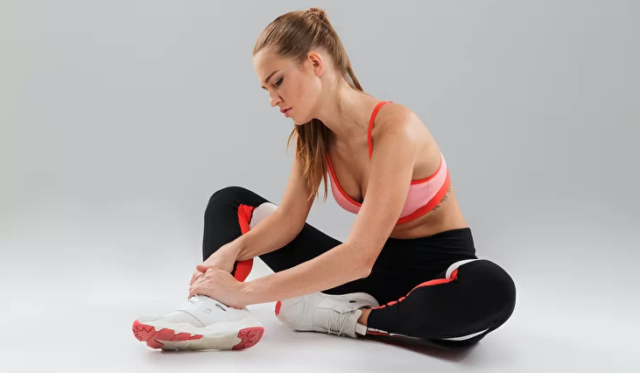Why do muscles stop hurting after training

What does muscle pain after a workout say – the main reasons
When we exercise, the body needs more energy, so it uses carbohydrates, more precisely, glucose. It is cleaved without the participation of oxygen, its final oxidation product is a lactic acid ion or lactate. With intense physical exertion, all lactate does not have time to be excreted, and lactic acid accumulates in the muscles. After training, the burning sensation stops – within a couple of hours, lactic acid is removed from the muscle fibers.
The burning sensation passes, but the muscles are moderately sore. This is pleasant fatigue from a lack of energy and nutritious material. After 4-6 hours, reserves are restored and the feeling of fatigue disappears. But it’s replaced by pain.
Post-workout muscle soreness does not mean muscle growth, and it is not an indicator of a quality workout, as many amateur athletes think. Pain indicates microtrauma – the destruction of the internal structure of the muscles. It sounds menacing, in fact, there is nothing terrible, this is not a formidable muscle tear, and you do not need to see a doctor. This is normal after a strenuous workout. For more information about the mechanism of the occurrence of “correct” muscle pain (it is also called anabolic), read in our article “Why muscles hurt and how to live with it” .
From this useful muscle pain after a workout, many fitness enthusiasts literally get masochistic pleasure, realizing that the efforts were not in vain, the muscles received the necessary physical activity and their growth began.
But there comes a moment when you seem to be training intensively, but there is no pain. What is the reason? Why don’t my muscles hurt after a workout? Does this mean that the load was insufficient and muscle growth slowed down?
Why is there still no muscle pain after exercise
We’ll have to plunge into the processes of biochemistry of muscle tissue more deeply.
Each workout contributes not only to increased protein synthesis, but also to the accumulation of creatine phosphate in the muscles. The concentration also increases and the activity of glycolysis and oxidation enzymes (the processes responsible for energy metabolism in muscles) increases.
Thanks to such a response of the body to every workout (namely, to a regular one, without long breaks), it becomes more and more difficult to deplete the supply of creatine phosphate – one of the energy sources in the body, and with a high level of physical fitness it is almost impossible. Thanks to this, a stressful situation does not occur.
This is the answer to why post-workout pain is especially strongly felt after the first sessions, practically disappears with regular exertion and reappears after a long break.
But muscles after training may not hurt in other cases.
Common Causes of No Muscle Pain
Muscles of the same group are constantly loaded
If you perform the same set of exercises for a long time, the pain disappears – the muscles are already accustomed to constant stress.
Review the program and include exercises for other muscle groups in it.
Weak load
If the load is insufficient, the muscles work at half strength, there are no microtears, and there is no post-workout pain.
It is necessary to increase the load – increase the intensity of classes, do more approaches, reduce the rest time between exercises, increase the training time.
Rapid muscle regeneration
This is not a reason to panic, but rather, a natural bonus to your body. Everyone has a different genetic background – and if you recover quickly, muscle pain after a workout may only appear after the first few sessions, when you are still new to the sport.
Why Muscles Don’t Hurt With Regular Exercise
The body adapts to systematic exercises – muscle strength increases, their performance increases. Muscle tissues become more elastic, elastic and no longer hurt after training.
Thus, if there is no pain in the muscles after training, and does not appear after increasing the load, this is a sign that an adaptation process has occurred. Many experienced athletes do not feel post-workout muscle soreness, and this does not prevent them from progressing.
But there are important things to keep in mind:
- Increase the load smoothly, but not excessively, beware of overtraining. If the body has not yet recovered to the desired condition, and you again load it to muscle failure, trying to achieve more, the pain will be stronger. And this is “bad”, unproductive pain that can lead to injury and disease.
- Eat a balanced diet, including proteins, fats, and carbohydrates.
- No matter how much they talk about the benefits of sleep, many people neglect it – they sleep less than 7-8 hours, go to bed after midnight. But it is full-fledged sleep that has the strongest impact on recovery after training.
- The correct technique for performing exercises and competent recovery after exertion are important points. Proper technique requires good stretching, so warming up before training is a must.
- Recovery is faster if you relieve tension with a myofascial release on a roll or stretching for all muscle groups . In general, you need to work on stretching constantly. It helps maintain range of motion in the joints so that the muscles do not contract or weaken.